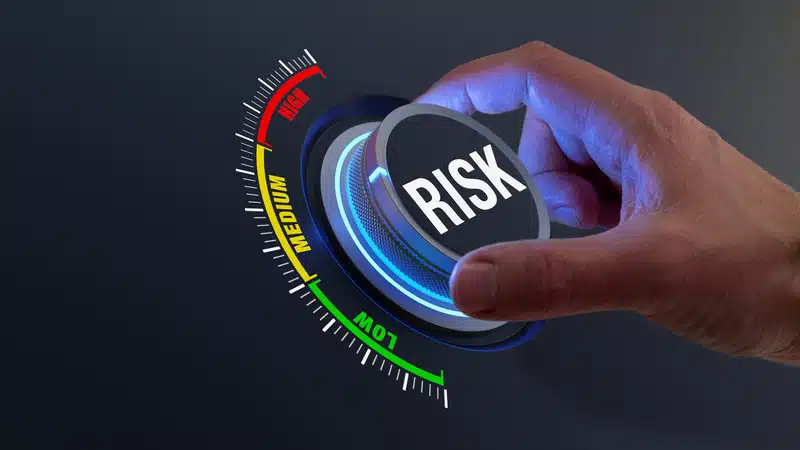Beyond the snapshot: Why continuous risk assessment is essential in today's threat landscape

Security vulnerabilities often lurk undetected within organizations, a consequence of gaps in traditional security assessments. These gaps can arise from missed systems during scans or the use of improper scanning techniques or technologies for specific systems.
To effectively manage risk, organizations need a comprehensive understanding of their security posture across the entire technology stack. This is where continuous risk assessment comes in -- it provides enhanced visibility, pinpointing vulnerabilities that periodic audits might miss and highlighting the limitations of traditional methods.
The Limitations of Periodic Security Audits
The challenge with periodic security audits lies in their static nature. They offer a snapshot of an organization's security at a specific point in time, struggling to keep pace with the ever-evolving threat landscape. New cyber threats emerge constantly, and relying solely on infrequent and predictable audits leaves organizations exposed. Malicious actors can even exploit the predictability of scheduled audits by introducing and removing vulnerabilities outside the audit window.
Limited visibility and infrequent application of security updates significantly increase the likelihood of security breaches. This exposes a critical vulnerability within traditional frameworks: delayed responses to emerging threats can lead to unchecked system intrusions and widespread damage before any remedial actions are possible.
Furthermore, adopting a proactive security approach through continuous risk assessment isn't a luxury; it's a fundamental necessity for effective risk mitigation. Organizations lacking preemptive vulnerability identification and management remain constantly at risk of severe operational disruptions, substantial financial losses, reputational damage, and strategic instability due to cyberattacks.
The threat landscape extends beyond malicious actors. Inadvertent actions by employees or contractors who don't understand the potential consequences of their actions can also lead to security breaches. For example, clicking on a suspicious link in an email or accidentally downloading malware can compromise an organization's security posture.
Empowering Proactive Security Through Technology and Training
The cybersecurity paradigm needs a shift from reactive to proactive. Leveraging advanced technologies like AI and machine learning in continuous risk assessment processes is crucial for gaining deeper insights and enabling faster responses. These technologies offer several advantages: enhanced anomaly detection by efficiently analyzing vast amounts of data for subtle, emerging threats, and streamlined analysis by correlating security data from various sources for a more holistic view of the organization's security posture. Strategic integration of AI and machine learning bolsters an organization's security posture and positions it at the forefront of cybersecurity innovation.
The path to achieving continuous security and mitigating the risks associated with limited visibility involves several steps. First, implementing advanced monitoring tools that can analyze and correlate data from disparate sources in real-time is essential. This technology enables the detection of anomalies and potential threats as they occur, allowing for immediate response.
Second, refining response protocols is crucial. This includes establishing detailed plans for handling different security alerts, assigning roles and responsibilities, creating step-by-step response procedures, and ensuring efficient communication across security teams. Additionally, procedures for documenting incidents and learning from them are vital to prevent future breaches.
Finally, prioritizing security awareness training is key. Regular training sessions should keep security personnel updated on the latest cybersecurity threats and defensive tactics. These sessions should incorporate simulations and drills to prepare the team for real-world breach scenarios, including those caused by unintentional employee or contractor actions.
The benefits of security awareness training extend beyond the organization. By empowering employees and contractors to identify and avoid cyber threats, organizations not only strengthen their own defenses but also equip their workforce to be more secure digital citizens in their personal lives. Understanding phishing attempts, recognizing malware, and practicing strong password hygiene are valuable skills that benefit individuals both at work and at home.
Transitioning to a continuous risk assessment model offers several key benefits. Proactive vulnerability detection and response lead to a significant decrease in the frequency and severity of security incidents, minimizing potential damages and safeguarding organizational data integrity. Continuous monitoring and robust response protocols minimize the time spent managing and recovering from security incidents, translating to lower downtime and higher productivity across various departments. Additionally, efficient incident management frees up resources that can be invested in other critical areas.
Regular and thorough risk assessments demonstrate to regulators and stakeholders a commitment to maintaining high security standards. This fosters compliance with industry regulations and bolsters trust with clients and partners by assuring them that their data is protected.
The Path Forward With Continuous Risk Assessment
By embracing continuous risk assessment and implementing the recommended actions, organizations can achieve a more proactive and comprehensive security posture, safeguarding their assets, ensuring operational continuity, and building trust. The threat landscape demands a shift beyond the snapshot – continuous risk assessment is the key to staying secure in today's digital world, regardless of whether the threat is malicious or unintentional. Moreover, investing in security awareness training offers a valuable benefit to both the organization and its employees. In conclusion, a continuous approach to risk assessment, coupled with security awareness training, empowers organizations to fortify their security posture and foster a culture of resilience.
Image Credit: Nicoelnino / Dreamstime.com
Alex Horan is VP of Products at Onapsis.
